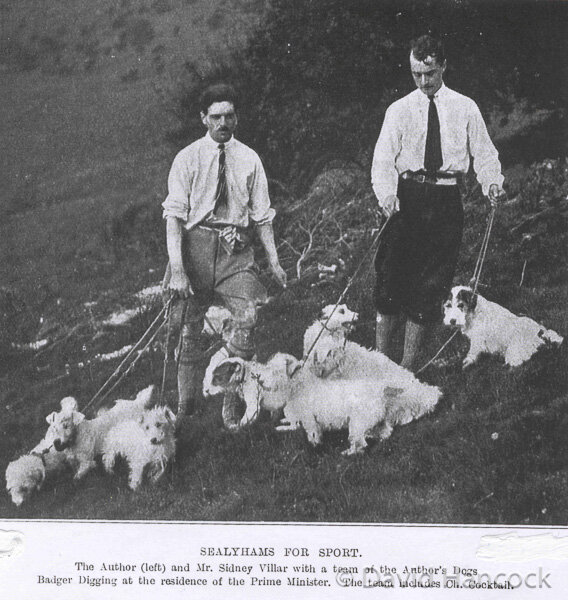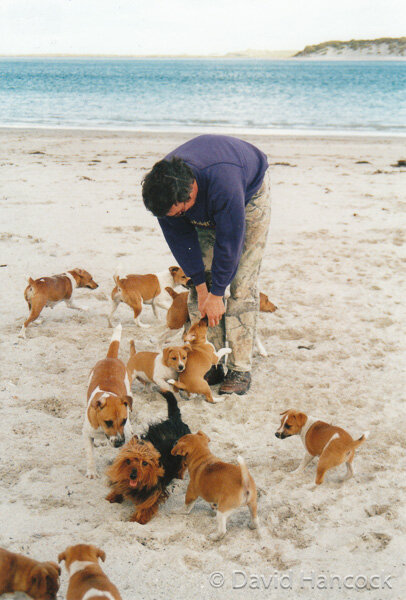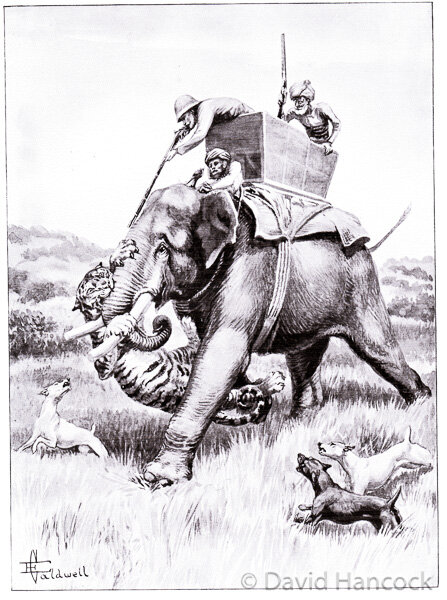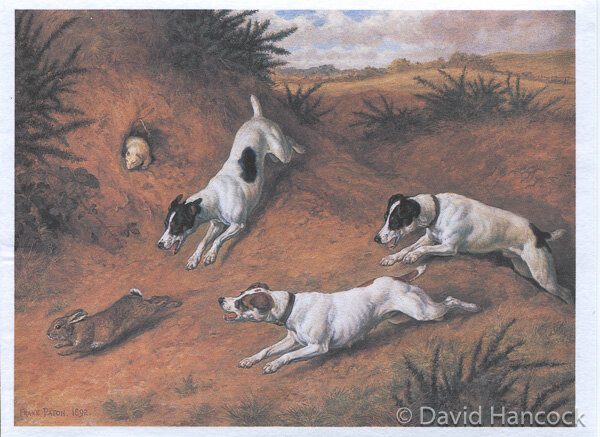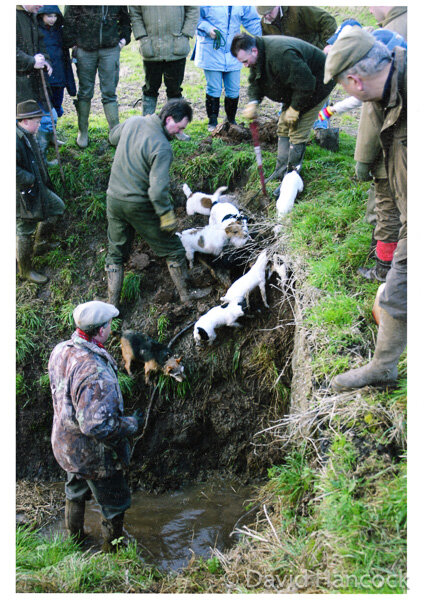1090
TERRIERS IN TEAMS
By David Hancock
I have long admired terrier-fanciers who have managed to get a team of terriers to hunt their prey rather than each other! So many terriers are ultra-competitive, a bit feisty with other dogs and often deaf to all instructions once their blood is up. Gifted terrier-men like Lucas, Free, Heinemann and Plummer had the training skills, and breeding skills before that, to field packs in the hunt. And terriers can hunt - not just rat, rabbit, mink and fox but big game like bear and elephant too, as records of the Indian hunt reveal. In his informative "Secrets of Dog Training" Brian Plummer wrote, with deliberate understatement, "Terriers despite their small size, are sometimes far from easy to control. In addition to the fact that most terriers still retain a strong inclination to hunt any type of animal or bird whose scent crosses their paths, the majority are particularly eager to take offence from another dog." It is interesting to note that most experienced and well-regarded terrier-men dislike dogs that are too hard; many outspoken but less experienced working terrier fanciers will often boast of the sheer aggression in their dogs. This to me is a sure sign of ego triumphing over common sense.
Having read Roger Free's 'Beagle and Terrier' as a young teenager, hunting with a small pack of assorted dogs, mainly terriers and a few Beagles, has long appealed to me. He wrote in times when individual freedom had greater outlet but a future need for vermin-control could see his style of operating in the field fashionable again and to a greater degree. The remarkable Sir Jocelyn Lucas used to hunt with his renowned Ilmer pack of Sealyhams (and before that a pack of smooth Fox Terriers); he wrote that he didn't want a dog that becomes tired after walking a mile and lamented the "most appalling-looking terriers described as 'working type'." There is no need for a bobbery pack, however nondescript, to feature unsound dogs or ugly brutes. But the utter determination in the hunt has to be present - and bred for.
We forget that Bull Terriers were once used by sportsmen in packs. GP Sanderson writing in his Thirty Years among the Wild Beasts of India of 1896 gave a powerful recommendation for the breed: “Previous to the time when my duties led to my living entirely in the jungles, I always kept one or two good bull-terriers for encounters with jackals, wild cats, etc. On the few occasions when I had the chance of using these dogs at formidable beasts they so distinguished themselves as to impress me with a high opinion of their prowess, and of their ability to overcome larger animals than might be thought possible.” Nowadays we have a very different view of hunting big game, and rightly so. But we should never underestimate the courage of the dogs used in such conflicts. And, of course, this breed has long been famed as a ratting terrier and is a major ingredient in most Bull-Lurchers. Bulldog blended with terrier works!
The British have long gone into the field with small packs of hunting dogs, wherever they lived, at home or overseas. Piece O’Conor, in the 1920s, Jocelyn Lucas, in the 1930s and 40s, Ivester Lloyd in the 1950s and Brian Plummer thereafter, all hunted mixed packs, if mainly terrier-based. Early in the last century, big game hunters in Africa like Rainey and Shelley used mixed packs of Plott Hounds, Airedale Terriers and cattle dog crosses with some success. But these men were all gifted users of dogs, well able to cope with minor disagreements between their hunting dogs and wise enough to make the very best use of instinctive skills, whatever the breed of dog utilised. Today some breeds of terrier are used by devotees in ratting packs but who are careful to use terriers 'broken' to their fellow canine hunters. They value the 'edge' inherent in their terriers, pay little respect to pedigree and enjoy the dogs for what they are - determined, capable, ratting dogs.
In France, the Societe Centrale Canine and the Reunion des Amateurs de Fox Terriers have instituted the Coupe de France de Broussaillage - flushing game above ground. Smooth Fox Terriers there are recognized not just below ground, but for their aptitude for hunting above ground, flushing out wild pig from thick undergrowth and their persistence and boldness in the drive. German Hunt Terriers, Jack Russells and Welsh Terriers are used, as well as Fox Terriers. Points are awarded for performance during the search (15), flushing and voice (20), drive and pursuit (10) and reaction to gunfire (5). Judges can multiply the scores according to the dog’s overall showing, so that a total of say 40 could be increased by doubling or even tripling the score to 80 or 120. Grades are awarded for 125-150 points (excellent), 100-125 (tres bon) and 75-100 (bon), with 50-75 earning an honourable mention. How good it would be if such terrier working tests were to be introduced here, if only to save the breed of Fox Terrier! But terriers can work in packs, they just need enlightened management.
